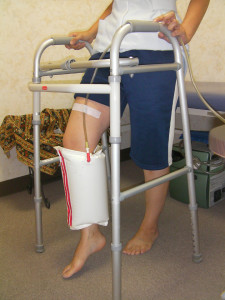The venous filling index (VFI) of air-plethysmography (APG) is recorded in mL/s. It quantifies filling and is the most useful parameter in the quantification of reflux since the early pioneers like J C Allan et al, in 1964. The VFI represents the rate of increase in calf volume following an elevation to dependency manoeuvre. The measurement is performed using a calf air sensor-cuff which records changes in volume. It is intuitive that a fast rate of increase in calf volume on dependency relates to reflux. However, the sensor cuff cannot discriminate between the causes of an increase in volume. These include filling from reflux as well as filling from arterial supply. The group in Kagawa, Japan have been able to improve on the quantification of reflux by subtracting the filling from arterial supply, from the filling from reflux. This has resulted in a new index called the pure regurgitation index (PRI).
YASUSHI SHIRAISHI Air plethysmography (APG) has been widely used as a sensitive and reproducible method for quantifying changes in the parameters of arterial and venous function of the lower extremities. Among several parameters obtained by APG, the venous filling index (VFI) from elevation to standing has been considered the most useful indicator of venous reflux. However, this is influenced both by the arterial inflow rate and physique as well as the venous reflux rate. When the relationship between venous reflux and clinical severity is evaluated, it is important to remove the confounding variables like arterial filling from the VFI. For this reason we created the novel Pure Regurgitation Index (PRI). This is calculated by subtracting the arterial filling from the venous filling in reference to the body mass index. The VFI supine (arterial supply rate in mL/s) is obtained by venous occlusion plethysmography on inflation of an occlusive thigh cuff. The VFI on standing is obtained in the usual way. We have shown that the PRI has greater accuracy than the VFI in the assessment of reflux and recommend this parameter in all future quantifications of reflux.
The sensor-cuff of APG records changes in volume of the calf. It is not able to discriminate the cause of this change.
